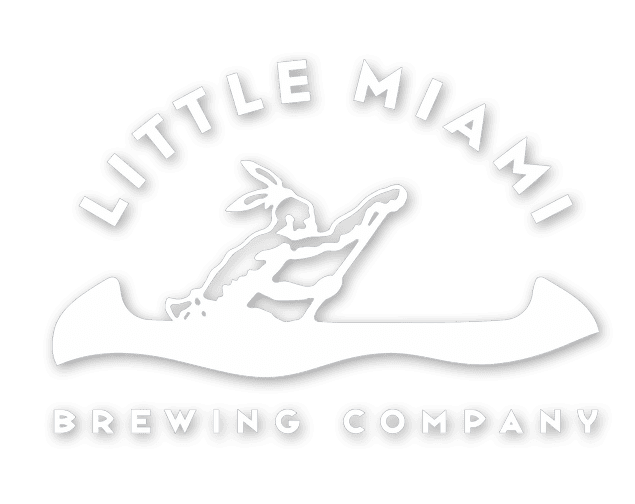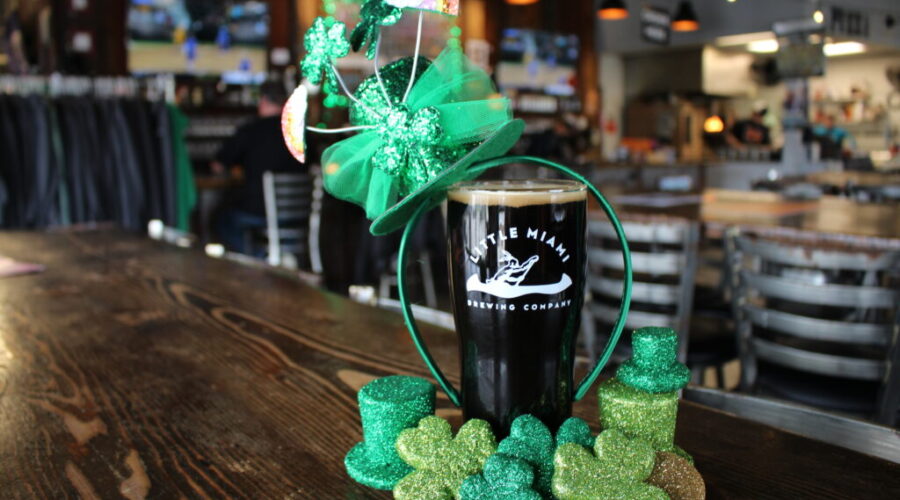Bold, Dark, and Timeless: A Deep Dive Into the History of Stout Beer
Ever taken a sip of stout and wondered who first decided to brew something this gloriously dark?
We’ll admit it—we’re stout fanatics here at Little Miami Brewing. There’s just something magical about that moment when we tap a fresh keg and watch that first perfect pour. The way the dark liquid cascades and forms that creamy tan head… it never gets old. We’ve seen countless customers’ eyes widen with their first sip, that “whoa” expression when they realize dark beer can be this smooth and flavorful.
When autumn rolls around and that first crisp Ohio air hits, our brewers start itching to break out the roasted malts. And our goal today? To uncover the rich and complex history of stout beer, its global legacy, and why it still inspires brewers today.
Origins in England: The Birth of the Stout
Let’s be honest—many great inventions start with someone just trying to get through their workday. That’s exactly how Stout beer began in the early 1700s. London dockworkers and street porters needed something stronger to fuel their brutal shifts. The solution? A dark, malty brew that’s calorie-rich and bolder than your average ale.
Here’s how the magic happened:
The transition from porter to “stout” was a marketing shift, emphasizing strength and flavor.
The “Stout Porter” Era (1720s-1820s)
- Brewers started marking barrels with “S” for “stout” (meaning strong).
- These early versions were stronger with 7-8% ABV – practically a meal in a glass!
The Great Leap Forward (1820s-1900)
That’s when things got really interesting:
- Guinness, a name synonymous with stout, shaped modern stout culture.
- Roasting revolution – The discovery that roasted barley created richer flavors
- Global domination – Irish immigrants brought stout to America and beyond
A quirky fact? Victorian doctors actually prescribed stout for everything from anemia to nursing mothers. While we definitely don’t recommend that medical advice today, it does explain why our great-grandparents thought a pint a day kept the doctor away!
Why This History Matters to Us
When we’re developing new stout recipes, we constantly come back to these roots. That perfect balance of drinkability and richness? That’s the same challenge those 18th-century brewers faced. Some solutions we’ve borrowed directly:
- Using oatmeal for a silkier texture
- Barrel-aging for complexity (though we use bourbon barrels instead of wine casks)
From British Pubs to Irish traditions, the history of stout beer stands as proof of flavor and function.
Types of Stout Beer: One Style, Many Faces

Not all stouts are created equal. Here are some beloved types of stout beer, each with a unique profile:
The Classic Styles (Our Tried-and-True Favorites)
- Dry Irish Stout – That iconic creamy head and coffee-like finish (The Pub Standard)
- Milk/Sweet Stout – Dessert in a glass, often paired with our homemade pretzels or chocolate desserts.
- Oatmeal Stout – Velvety mouthfeel from locally sourced Ohio oats
Fun fact: The nitrogen tap wasn’t invented until 1959! Before that, all stouts were carbonated like regular beer.
The Modern Innovators (Where We Get to Play)
- Imperial Stout – Bold, boozy, and complex
- Coffee & Chocolate Stout – Intensify as they warm; we partner with local coffee roasters. Our coffee stout—Stout 126—features cinnamon notes
- Pastry Stouts – Flavored with marshmallow, vanilla, or cinnamon for that dessert twist
We also experiment with small-batch stouts that reflect local ingredients and Cincinnati’s creativity.
Why This Matters for Cincinnati Beer Lovers
We’ve noticed something special about our local stout drinkers – they’re adventurous. Maybe it’s our German brewing heritage or those long Midwest winters, but Cincinnati craft beer fans aren’t afraid of bold flavors. That’s why we always keep at least three stout varieties on tap, from approachable to extreme. From approachable to extreme—we’ve got a stout for every palate.
Crossing the Pond: How Stouts Reached the U.S.

We’ve got a theory: stout was always meant to land in America. What’s more American than taking something traditional and saying, “Yeah, but what if we made it bigger, bolder, and maybe put bacon in it?”
The Immigrant Era (1800s-1920s)
Irish and English immigrants brought their thirst for dark beer with them to cities like Cincinnati. But here’s the twist – American brewers immediately started tinkering:
Early Adaptations:
- Used native corn and maize to lighten the body (controversial!)
- Higher hopping rates to balance the sweetness
- Served colder than European versions (scandalous!)
Bold flavors, barrel-aging, and creativity redefined the history of Stout Beer in America.
The Rise of Craft Beer and the Stout Renaissance
The ‘80s and ‘90s brought a brewing revolution. This is where things get personal for us. Stout became the ultimate brewer’s playground when the American craft movement took off.
Cincinnati’s Special Relationship With Stout
Our city’s brewing DNA makes us uniquely suited for stout love:
- German heritage means we appreciate robust flavors
- Cold winters demand hearty beers (Explore all our beer styles)
- Local ingredients like Ohio maple syrup inspire our recipes
Our Favorite Local Stout Moments:
- That time we aged a stout in former bourbon barrels from a distillery down the road
- The ongoing debate about whether Skyline Chili pairs with stout (we say yes – fight us)
At LMBC, we take inspiration from Stout’s global legacy but always put a Cincinnati twist on it.
Stout Beer Tasting Notes: What to Expect
Let’s settle this first: tasting stout isn’t just drinking—it’s an experience. At Little Miami Brewing Company, we train our staff to guide patrons through two key elements when sampling our stouts. Here’s how to decode your next pint like a pro:
Visual Clues (It’s Not All Black!)
Even before sipping, your eyes can detect:
- Deep, Dark Mystery: The moment our St. James Dry Irish Stout hits the glass, it pours like liquid midnight—a rich, opaque black that whispers of roasted barley and bold flavor.
- Creamy Crown: A thick, velvety foam rises to the top, clinging stubbornly to the glass. That’s your first clue—this stout is smooth, well-crafted, and meant to be savored.
- Elegant Traces: As you tilt the glass, delicate streaks slowly trace their way down, hinting at just the right touch of alcohol—enough to warm, never to overwhelm.
Aroma Profiles by Style
We categorize scents across our core stouts:
- St. James Dry Irish Stout
- Primary Aromas: Roasted Coffee, Biscuit
- Hidden Notes: Subtle mineral edge
- Chocolate Cherry Stout
- Primary Aromas: Cocoa, Dark Cherry
- Hidden Notes: Hints of toasted bread
- Paddle Buster Oatmeal Stout
- Primary Aromas: Smooth malt, Light roast
- Hidden Notes: Creamy sweetness from oats
Pro Tip: Cup your hands over the glass to trap aromas before sipping.
Food Pairings We Swear By
Tested in our taproom kitchen:
- With Savory: St. James Dry Irish Stout + soft pretzels (the roasted malt balances the salt).
- With Sweet: Chocolate Cherry Stout + flourless chocolate cake (a perfect intensity match).
- With Cheese: Paddle Buster Oatmeal Stout + creamy blue cheese (a delightful contrast).
Learn more: Craft Beer and Food Pairings at LMBC
Why Stouts Belong in Cincinnati’s Beer Culture

There’s a reason stouts feel right at home in Cincinnati—this city was deeply rooted in a love for dark beer. From our German brewing roots to those bone-chilling winters along the Ohio River, stouts aren’t just another style here; they’re part of our DNA.
Local Ingredients, Local Flavors
Our stouts taste like Cincinnati because they’re made with Cincinnati:
- Ohio maple syrup in our seasonal brews
- Kentucky bourbon barrels for aging
- Coffee from local roasters
Stout-Centric Traditions
This city celebrates dark beer like nowhere else:
- Bockfest: Where stout and sausage reign supreme
- Cincy Beerfests: Our St. James Stout always sells out first
- Taproom Culture: Regulars debate stout vintages like wine connoisseurs
We embrace this tradition with every keg we tap. Join us for events and enjoy yourselves.
Try Our Take on This Legendary Brew
There’s a moment we live for—when a first-time visitor takes that initial sip of our Chocolate Cherry Stout and their eyes light up with dark beer revelation. This is why we obsess over every roast level, barrel selection, and nitro pour. Our stouts feel like stories in a glass, blending Cincinnati’s brewing heritage with modern craft rebellion.
Right now, our taps are flowing with must-try experiences: from the velvety St James Dry Irish Stout for traditionalists to the decadent Paddle Buster for adventure seekers, and the legendary Chocolate Cherry Stout for those chasing complexity. Each pour comes with our brewers’ passion and your next “wow” moment.
Don’t just read about it—come taste why stout belongs in Cincinnati—before these small batches disappear.
Your perfect stout story starts here. Visit us and taste it yourself to know why Cincinnati loves Stouts.

